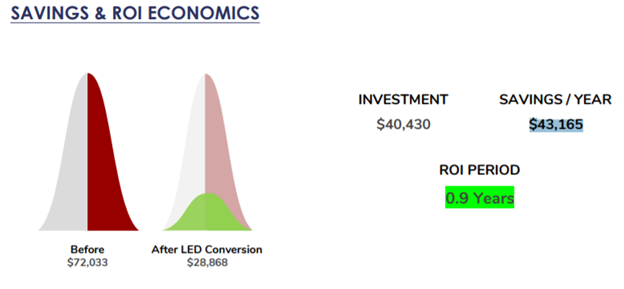BLOG
Are Smart Street lights worth the investment?

Shreya Dr
Sept 25, 2021 4 min read
Smart street lights are a paradigm of technological transformation in the lighting industry, they will pave the way for a more sustainable form of living. Smart lighting systems have been prevalent for quite some time now, but many governments have been skeptical about revamping cities with smart street lights due to their high cost of investment. The question now arises, are smart street lights worth the investment?
IoT-enabled smart lights offer a plethora of benefits. A smart lighting system comprises a network of street lights that can communicate with each other and provide real-time data to a central management system. The basic components of such a system include high-efficiency LED lamps, an IoT-based communication network that enables remote control ( auto-scheduling, dimming, automatic ON/OFF, etc), and smart sensors for additional features. With auto-dimming, scheduling, and a host of other capabilities smart street lighting can significantly reduce energy costs by 80%, with a 60% reduction achieved by switching from incandescent light bulbs to LEDs (light-emitting diodes), and a further reduction of 20-25% on account of intelligent lighting controls. The range of features and multitude of benefits that smart street lights possess ensure a guaranteed return on investment in 2-4 years on average.
Intelligent street light controllers can work dynamically to adjust light levels based on specified criteria: high intensity during peak hours, reduced intensity when human presence isn’t detected, auto-scheduling, etc. The incorporation of the aforementioned features will significantly reduce energy consumption. Smart lights are powered with electricity, a reduced energy consumption means that a lower amount of electricity is used which ultimately leads to lower costs. Some of the projects carried out by Hynetic are predicted to yield an ROI of 3 times the initial investment over a period of 10 years.
While the CAPEX for smart street lighting is considerably high, the OPEX costs reduce drastically on account of a smart management system. Optimized maintenance proves to be a major advantage of intelligent street lighting systems. They reduce maintenance costs by 50%. Availability of the real-time status of each light enables the central management system to generate notifications in case of fault errors. This allows operators to take informed actions and reduce the need for frequent maintenance. An exceptional feature that drastically reduces operational costs is the ability to pinpoint the geo-location of faulty lights. Maintenance crews would be able to precisely track the exact location of the light that needs to be fixed without having to take multiple rounds to locate the defective light. Predictive analysis enables a robust and efficient lighting system that isn’t prone to incessant repairs. This feature identifies small problems that can be solved before they cascade into larger problems. The aforementioned benefits drastically reduce operational costs for a lighting system, which will prove to be a good investment.
Apart from the basic benefits a smart lighting system offers, it provides several complementary features in the form of a smart pole. A smart pole could potentially contain several other features such as security cameras to enhance public safety, WiFi repeaters to provide public WiFi, digital street signages, weather monitoring sensors, etc. These features can be monetized to secure higher profits and greater ROI.
A case study carried out by Hynetic Electronics gives an estimate for the ROI at Jababeka Industrial Estate in Indonesia. The proposed smart lighting solution is for a Pilot in one of the Zones that has approximately 2000 lights. This case study project comprised of three parts:
Part-1 : Conversion of Non-LED to LED
Part-2 : Conversion of All Lights to Smart Lighting
Part-3 : Group Lighting Automation
In the first phase of the project, Non-LED lights were replaced with LED lights. The ROI analysis shows that by replacing Non-LED bulbs with LEDs, energy costs decrease by almost 60%
| ANNUAL ENERGY COSTS OF NON-LED FIXTURES | 72,033$ |
|---|---|
| ANNUAL ENERGY COSTS AFTER LED CONVERSION | 28,868$ |
| ANNUAL COST SAVINGS | 43,165$ |

In conclusion, smart street lights open a world of opportunities, starting from greater convenience, low energy consumption, reduced maintenance costs, and a myriad of other benefits. Now, who wouldn’t want that? Although the initial cost of investment for smart street lights may be higher as compared to conventional street lighting systems, the ROI and the host of capabilities it offers guarantees that the investment is worth it. While it may be true that this investment may not reap short-term benefits, however, in a span of 2-4 years, deploying smart street lighting will be propitious. In short, an intelligent lighting scheme would enable rapid, effective, and economical deployments that could smoothen the process for a city administration to upgrade its public services. Investing in Hynetics smart lighting system would provide an end-to-end solution with a flexible infrastructure for all your lighting needs with a guaranteed ROI in 2-4 years.
Please enter your details below to access these blog resources.
Any questions please contact info@hynetic.com.
Thank You!
Do you need a smart street lighting solution?
Let us help you identify and evaluate the technical solutions that will help you reach your smart lighting and smart city goals.





